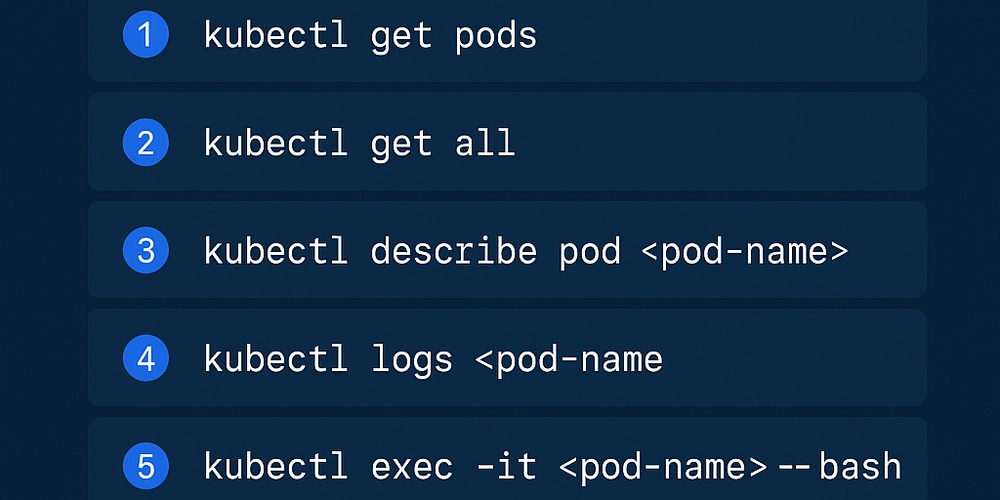How to Reduce Duplication of Method Implementations in Go
In Go, when you have multiple struct types that need to perform the same methods, it can often lead to code duplication. This issue is quite common, especially in cases where you have several struct types with similar methods. In this article, we will explore how to effectively reduce method duplication using interfaces and composition, thereby making your code cleaner and more maintainable. Understanding the Problem Let's begin by analyzing the problem you've presented. You have several structs (A, B, C, and D) that all implement the same methods, specifically Add and Remove. Repetition of code leads to maintenance challenges—any change in method logic must be mirrored across all structs, increasing the risk of errors. The Traditional Approach The initial code example you provided clearly outlines the repetitive nature of the method implementations: func(i *A) Add(x int) { i.Qty = append(i.Qty, x) } func(i *B) Add(x int) { i.Qty = append(i.Qty, x) } func(i *C) Add(x int) { i.Qty = append(i.Qty, x) } func(i *D) Add(x int) { i.Qty = append(i.Qty, x) } Solution 1: Using Interfaces and Composition While Go does not support inheritance like some other languages, you can utilize interfaces and struct embedding to achieve a similar effect. Instead of implementing methods for each struct, you can create a base struct to hold the shared logic and use it in your other structs. Here’s how you can do that: Define a Base Struct type Base struct { Qty []int } Embed the Base Struct You can then embed this base struct into your specific structs: type A struct { Base } type B struct { Base } type C struct { Base } type D struct { Base } Implement Methods on Base Struct Next, you implement the methods on the Base struct: func (b *Base) Add(x int) { b.Qty = append(b.Qty, x) } func (b *Base) Remove(x int) { for i, v := range b.Qty { if v == x { b.Qty = append(b.Qty[:i], b.Qty[i+1:]...) break } } } Now, both A, B, C, and D can leverage Add and Remove methods without duplicating the logic: func main() { a := &A{} a.Add(5) fmt.Println(a.Qty) // Output: [5] } Solution 2: Using Interfaces with a Method Another way to encapsulate the behavior is by utilizing interfaces. By creating an Adder interface, you can define an abstraction that holds the required methods for any struct that conforms to it. type Adder interface { Add(int) Remove(int) } You can then create structs like A, B, C, and D, implementing the Add and Remove methods as described above, and use a common interface reference to call these methods. However, the method implementation will still remain in each struct, making it less efficient than the first approach but useful in certain scenarios. Frequently Asked Questions (FAQ) What if I want to add more methods in the future? If you need to add more methods, just implement them in the Base struct, and all your embedded structs will automatically inherit them. Can I use generics in Go to avoid duplicating methods? Security of types in Go prohibits defining a generic method like some other languages. However, you can use the interface approach as outlined. Conclusion By utilizing struct embedding or interfaces in Go, you can significantly reduce code duplication while maintaining a clean and maintainable codebase. The first solution using base structs is often the most effective, especially as the number of struct types increases. This will not only save you time during development but will also reduce potential bugs in your code. With the techniques mentioned in this article, you can work more efficiently in Go without the headache of repetitive code. Always aim for clearer, more structured code to enhance both functionality and readability.

In Go, when you have multiple struct types that need to perform the same methods, it can often lead to code duplication. This issue is quite common, especially in cases where you have several struct types with similar methods. In this article, we will explore how to effectively reduce method duplication using interfaces and composition, thereby making your code cleaner and more maintainable.
Understanding the Problem
Let's begin by analyzing the problem you've presented. You have several structs (A, B, C, and D) that all implement the same methods, specifically Add and Remove. Repetition of code leads to maintenance challenges—any change in method logic must be mirrored across all structs, increasing the risk of errors.
The Traditional Approach
The initial code example you provided clearly outlines the repetitive nature of the method implementations:
func(i *A) Add(x int) {
i.Qty = append(i.Qty, x)
}
func(i *B) Add(x int) {
i.Qty = append(i.Qty, x)
}
func(i *C) Add(x int) {
i.Qty = append(i.Qty, x)
}
func(i *D) Add(x int) {
i.Qty = append(i.Qty, x)
}
Solution 1: Using Interfaces and Composition
While Go does not support inheritance like some other languages, you can utilize interfaces and struct embedding to achieve a similar effect. Instead of implementing methods for each struct, you can create a base struct to hold the shared logic and use it in your other structs.
Here’s how you can do that:
Define a Base Struct
type Base struct {
Qty []int
}
Embed the Base Struct
You can then embed this base struct into your specific structs:
type A struct {
Base
}
type B struct {
Base
}
type C struct {
Base
}
type D struct {
Base
}
Implement Methods on Base Struct
Next, you implement the methods on the Base struct:
func (b *Base) Add(x int) {
b.Qty = append(b.Qty, x)
}
func (b *Base) Remove(x int) {
for i, v := range b.Qty {
if v == x {
b.Qty = append(b.Qty[:i], b.Qty[i+1:]...)
break
}
}
}
Now, both A, B, C, and D can leverage Add and Remove methods without duplicating the logic:
func main() {
a := &A{}
a.Add(5)
fmt.Println(a.Qty) // Output: [5]
}
Solution 2: Using Interfaces with a Method
Another way to encapsulate the behavior is by utilizing interfaces. By creating an Adder interface, you can define an abstraction that holds the required methods for any struct that conforms to it.
type Adder interface {
Add(int)
Remove(int)
}
You can then create structs like A, B, C, and D, implementing the Add and Remove methods as described above, and use a common interface reference to call these methods. However, the method implementation will still remain in each struct, making it less efficient than the first approach but useful in certain scenarios.
Frequently Asked Questions (FAQ)
-
What if I want to add more methods in the future?
If you need to add more methods, just implement them in theBasestruct, and all your embedded structs will automatically inherit them. -
Can I use generics in Go to avoid duplicating methods?
Security of types in Go prohibits defining a generic method like some other languages. However, you can use the interface approach as outlined.
Conclusion
By utilizing struct embedding or interfaces in Go, you can significantly reduce code duplication while maintaining a clean and maintainable codebase. The first solution using base structs is often the most effective, especially as the number of struct types increases. This will not only save you time during development but will also reduce potential bugs in your code.
With the techniques mentioned in this article, you can work more efficiently in Go without the headache of repetitive code. Always aim for clearer, more structured code to enhance both functionality and readability.










































































































































































![[The AI Show Episode 146]: Rise of “AI-First” Companies, AI Job Disruption, GPT-4o Update Gets Rolled Back, How Big Consulting Firms Use AI, and Meta AI App](https://www.marketingaiinstitute.com/hubfs/ep%20146%20cover.png)




























































































































![[FREE EBOOKS] Offensive Security Using Python, Learn Computer Forensics — 2nd edition & Four More Best Selling Titles](https://www.javacodegeeks.com/wp-content/uploads/2012/12/jcg-logo.jpg)



![Ditching a Microsoft Job to Enter Startup Purgatory with Lonewolf Engineer Sam Crombie [Podcast #171]](https://cdn.hashnode.com/res/hashnode/image/upload/v1746753508177/0cd57f66-fdb0-4972-b285-1443a7db39fc.png?#)






























































































































































































































-xl.jpg)













![As Galaxy Watch prepares a major change, which smartwatch design to you prefer? [Poll]](https://i0.wp.com/9to5google.com/wp-content/uploads/sites/4/2024/07/Galaxy-Watch-Ultra-and-Apple-Watch-Ultra-1.jpg?resize=1200%2C628&quality=82&strip=all&ssl=1)













![Apple M4 iMac Drops to New All-Time Low Price of $1059 [Deal]](https://www.iclarified.com/images/news/97281/97281/97281-640.jpg)
![Beats Studio Buds + On Sale for $99.95 [Lowest Price Ever]](https://www.iclarified.com/images/news/96983/96983/96983-640.jpg)

![New iPad 11 (A16) On Sale for Just $277.78! [Lowest Price Ever]](https://www.iclarified.com/images/news/97273/97273/97273-640.jpg)







































![Apple's 11th Gen iPad Drops to New Low Price of $277.78 on Amazon [Updated]](https://images.macrumors.com/t/yQCVe42SNCzUyF04yj1XYLHG5FM=/2500x/article-new/2025/03/11th-gen-ipad-orange.jpeg)



![[Exclusive] Infinix GT DynaVue: a Prototype that could change everything!](https://www.gizchina.com/wp-content/uploads/images/2025/05/Screen-Shot-2025-05-10-at-16.07.40-PM-copy.png)
























































